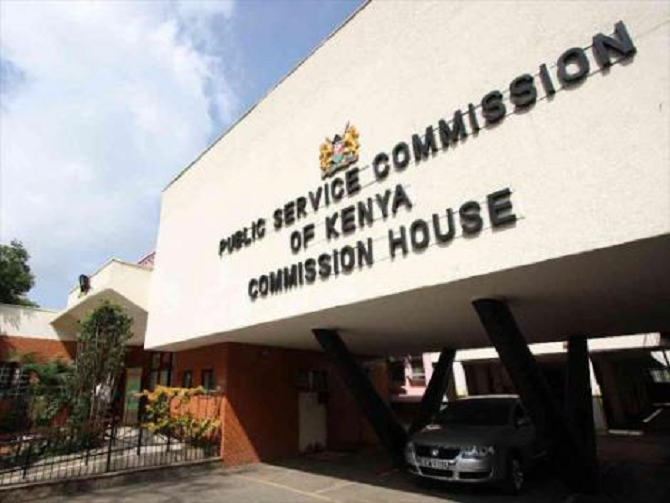Most analysts have dubbed the year as a period of belt-tightening, which is likely to persist for years to come. The Government must devise initiatives to reduce spending, including increased efficiency dividends. Among other things, the government’s public service reform policy agenda should focus on boosting productivity and reducing red (and green) tape.
While the environment has twin pressures of maintaining service levels with fewer resources and responding to increasingly complex policy problems, the focus on innovative approaches to enhancing productivity is likely to be renewed.
This reinforces the imperative for the Kenyan public service to position itself as a strategic, forward-looking organization, with an intrinsic culture of evaluation and innovation.
Objectives
Broadly, productivity can be understood as the efficiency with which an organization converts inputs to outputs.
The primary objectives of productivity improvement in the public sector are: to improve labour productivity of public servants; to align public sector expenditure with core activities; and to ensure better results for public service delivery programs.
There are a number of factors that necessitate productivity improvement:
Strained budgets
In response to immediate budgetary pressure, the government has instituted or proposed cuts in services offered by the government and increased taxes.
While both are necessary to balance the budget, there is a third option that can make a substantial contribution to easing the pressure, while at the same time helping to preserve essential services offered by the government such as health, education and security. This entails providing more public services for less money – thus raising productivity.
Impact on the economy
The public sector is the largest employer in Kenya, its slow productivity growth has made it a drag on the economy. Even without budgetary constraints, it would be important to increase public sector productivity as part of the overall growth strategy for the attainment of Kenya Vision 2030.
Whereas Kenya has implemented several productivity improvement interventions in the past, the country’s level of productivity remains dismally low and is responsible for the low, unstable and unsustainable economic growth.
READ >> How to Optimize Knowledge Management in Organisations
Therefore, despite productivity and competitiveness being key to national prosperity, the public sector has faced real challenges in driving its relative productivity level. There are several reasons why public sector productivity is critical to broader economic outcomes:
- In Kenya, the public sector is the largest employer at both the national and county government levels;
- The public sector is a major service provider, particularly business services (which affect the cost of resource inputs, such as labor or technology) and social services (which affect labor quality); and,
- The public sector consumes tax resources.
These factors mean that any changes in public sector productivity can have significant economic implications. Proposed reform initiatives by the government are aimed at facilitating productivity gains, for example through the efficient and effective use of resources. Similarly, the opposite outcome could be achieved through waste or misallocation.
Productivity Challenges
There is no single lens through which to consider public sector productivity. While there has been some criticism of the public sector’s tendency to prioritize spending reductions to increase productivity, sometimes efficiency needs to be the focus.
At the same time, other cases suggest the focus should be more on the effectiveness or quality of outcomes. It can be difficult to measure the bottomline in the public sector because, even if governments are as efficient as possible, there are often competing objectives unrelated to cost savings.
SEE >> Why President Uhuru Kenyatta needs a HR adviser
The public sector has an obligation to serve the greater good, and in these instances, a different, more balanced kind of productivity lens should be applied. The main challenge, therefore, in the public service is in using both lenses, and not prioritising one or the other to achieve unbalanced outcomes.
Driving efficiency
There is a strong reason why the government should use efficiency to drive more productivity in the public sector: controlling spending is the most direct way to save costs. Governments take this approach due to the difficulties of applying basic formulas to measuring productivity, and because service outcomes are hard to define and apply when delivery is so diverse.
However, in areas such as information technology, transactional human resources, procurement, and data entry, private sector measures can be applied, and the sector can work more closely with non-government partners to apply business methodologies to improve productivity.
See Also >> Brain-Drain as a Solution to Employment Crisis in Africa
In some cases, however, efficiency may be driven too far but may not necessarily the best outcome for government services. Some initiatives often taken as cost-saving measures turn out to be short-term fixes that have the contrary result of reducing long-term productivity.
For example, hiring freezes create staff shortages and overwork, which can result in the most talented staff (who are the most mobile) seeking opportunities elsewhere. Governments “hollow out” and the short-term productivity boosts don’t last. The Government will, therefore, need additional lenses through which to consider productivity throughout the implementation of this strategy.
Effectiveness and quality
There are several areas where the government will naturally want to ensure the quality and strength of her outputs, such as education, health, and national defense. When it comes to the intangible outcomes associated with these sectors, such as a good education, better hospital care, or safe air travel — things that are difficult to measure with perfect, quantitative accuracy — the government will consider how they can improve the quality and effectiveness of outcomes within existing resources.
Combining efficiency and effectiveness
Any definition or measurement of public sector productivity should involve both effectiveness (in terms of the achievement and quality of outcomes) and efficiency (in terms of ratio of outputs to inputs):
- Are citizens satisfied with the type and quality of the services that they are being provided?
- Are the public funds being invested having the desired impact?
- How could these services be provided more cost effectively?
What needs to change
While the lenses of efficiency and effectiveness are very useful when considering some of the transactional activities that the government undertakes, and can provide a focus for benchmarking good practices, the public sector needs to consider ways to change the way it operates so that it can be more consistently oriented to productivity goals.
To do this, there are three key areas of service delivery that the government need to focus on:
Relevance: In a constantly evolving environment, the government is under pressure to maintain relevance by delivering good quality services and achieving difficult outcomes. Productivity is important to government relevance and there are two main strategies that can be employed – better engagement with key stakeholders and improved use of data for accountability and decision making.
Approach: It is important to move the conversation about public sector productivity from “why and why not” to “how”. The time for debating the merits of a public sector that operates as effectively as possible is in the past, so the focus should be on approaches to improving operations.
While the type of Key Performance Indicators (KPIs) that are used in the private sector cannot be directly translated to the public service, having measures and targets for performance can positively contribute to improving productivity.
In a constantly evolving environment, the government is under pressure to maintain relevance by delivering good quality services and achieving difficult outcomes.
It is, however, important to acknowledge the difference between blanket indicators which can apply to all of government, and targeted indicators for specific parts of government, KPIs have a role to play in assisting the government to develop common standards.
Three areas that can be considered a priority for performance indicators, which could be applied to many areas of government: Innovation with, and procurement of, ICT; more effective use of machinery and equipment, including through Integrated Financial Management Information System (IFMIS)-procurement; and public sector use of private-sector research and development.
Current efforts
The Government issued a policy of productivity in 2013 “Sessional Paper No. 3 of 2013 on National Productivity Policy”. The policy addresses the multiple challenges impeding productivity advancement in the economy under four pillars namely: productivity culture; labor market development; technological change and innovation; and institutional and legal arrangements.
The policy also provides a Monitoring and Evaluation mechanism for effective implementation of the stated strategies and programmes.
According to the Productivity Policy, Kenya’s low levels of productivity can be attributed to various factors. These include lack of productivity consciousness and awareness; weak human resource base; weak labor-management partnership; poor work environment, and absence of a framework to guide productivity measurement and compensation. The specific objectives of the policy are to:
(i) Achieve Kenya’s incremental productivity growth of 5% per year from the current level of less than 1%;
(ii) Move towards improving the country’s productivity levels, with the public and private sector expected to achieve 4.5 and 5.5% productivity growth per annum respectively as a contribution to achieving the annual target growth in productivity. This is expected to enable the country to achieve its overall real GDP growth target of 10 percent annually as envisioned under the Kenya Vision 2030; and
(iii) Increase productivity awareness and consciousness level in the country from the current level of about 1 percent to 60 percent of the population by the year 2030.
Strategic Direction
Arising from the policy, it should be noted that information on public sector productivity in Kenya is currently non-existent or very limited if at all it exist.
In order to improve the evidence, the Government proposes to undertake the development of productivity measurement using the framework provided in the table below. The framework proposes that action is taken at a number of levels – cross-national, national and sectorial, and organization-based and bottom-up – and by a number of organizations to develop information on public sector productivity in Ireland.
The Government hopes that in this way, a diversity of approaches to productivity measurement can be used to provide a broad picture of productivity developments. The framework borrows from lessons learned from international experience.
| Productivity Initiative | Action Required |
| Cross-National Comparative Studies | Track Kenya’s comparative performance in periodic studies of public sector performance and efficiency such as in World Bank StudiesActively participate in regional public sector data exchange initiative |
| National and Sectoral Initiatives | The Kenya National Bureau of Statistics Office should take a lead role in the development of the measurement of government output and subsequent productivity studies. Annual output statements being developed by government departments should inform productivity studies. The health and education sectors should be priorities for productivity studies. Relevant state bodies and academic institutions should be encouraged to undertake research into public sector productivity measurement. Benchmarking of comparable organizations should take place. |
| Organization-Based and Bottom-up Initiatives | Organization-based measures of productivity should be developed, using annual output statements as a basis for this work. Central agencies should sponsor a number of service user based studies of the efficiency of public service provision across a range of sectors, repeated periodically. Benchmarking with comparable organizations should be encouraged. |
The above initiatives, the Government hopes, will ensure that the public sector organizations create an environment in which there is pressure to perform and raise productivity.
It is envisaged that this plan will enable the government put pressure to improve performance by putting in place effective performance-management mechanisms, including accountability for meeting productivity targets.
Only time will tell.










![To avoid another protracted legal battle, the Public Service Commission (PSC) is seeking views from the public on the establishment of the position as proposed by President Ruto. [Photo/ @WilliamsRuto]](https://businesstoday.co.ke/wp-content/uploads/2022/09/FdL-h5CXwAYNOHH-e1663830218465.jpg)
![Article 155 of the Constitution tasks the President with nominating a person for appointment as PS from among persons recommended by the Public Service Commission [PSC]. [Photo/ @WilliamsRuto]](https://businesstoday.co.ke/wp-content/uploads/2022/09/Fb5-We4XoAAWfuz.jpg)

Leave a comment